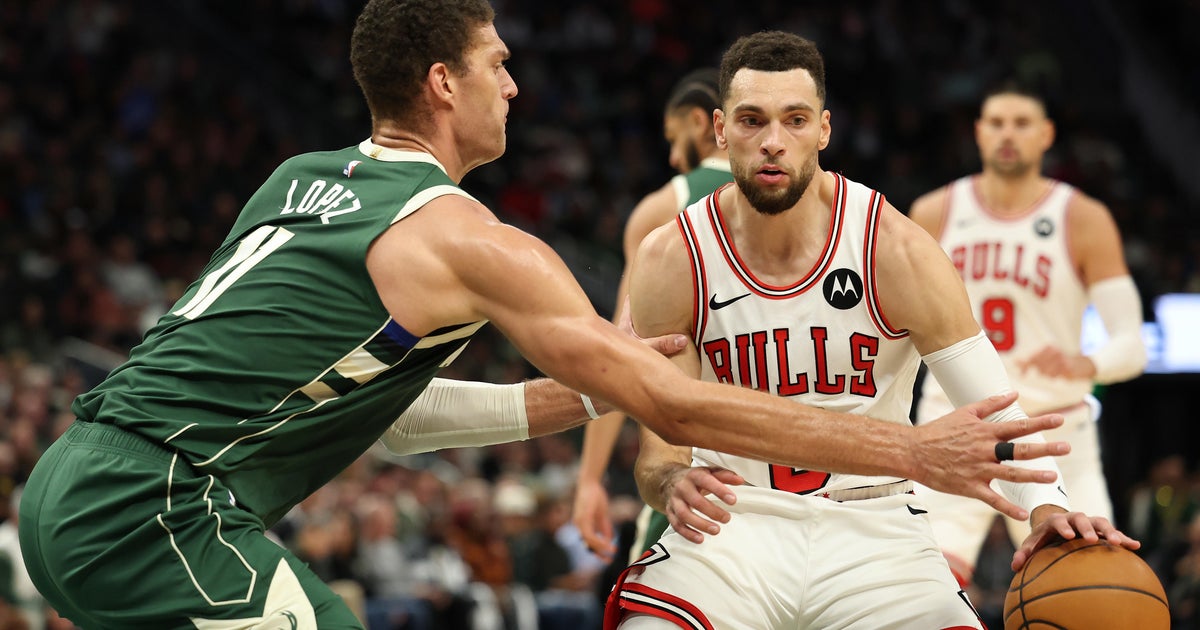Lindholm: Frank Thomas Hall Of Fame Discussion
By Scott Lindholm-
(CBS) The Baseball Hall of Fame (HOF) Class of 2014 inductees will be announced on Wednesday, Jan. 8. In addition to numerous holdover candidates there are five worthy first-time candidates--Tom Glavine, Jeff Kent, Greg Maddux, Mike Mussina and Frank Thomas. This post will focus on Frank Thomas.
The thought process of any Baseball Writers' Association of America (BBWAA) regarding Thomas should be very straightforward.
"I see Frank Thomas is on the ballot. I should put a check mark by his name."
It should be that easy. My primary measures are two values Bill James introduced in his book "Whatever Happened to the Hall of Fame?" (initially titled "The Politics of Glory"), the HOF Monitor and HOF Standards. These numbers are not perfect--they aren't adjusted to reflect changes in baseball such as increased offensive output, increased strikeouts by both pitchers and hitters and reduction in pitcher win totals, but they provide objective benchmarks with which to compare players.
The HOF Monitor has separate tests for pitchers and hitters which quantifies impact seasons--how many seasons over 200 hits, 30 doubles, 30 home runs, 100 runs scored and so on. 19 different values are measured and also includes defensive position and ability. The HOF Standards evaluate a player's career--did a player amass 2,500 hits, 400 home runs, 1,000 RBI, etc., 18 different measures. These two metrics combine 37 aspects many consider important when evaluating a player's career. The typical HOFer will have:
- HOF Monitor>100 points
- HOF Standards>50 points
What happens when these measures are combined? Now one can tell if a player had both a long career and a sustained run of high-impact seasons. We can then chart these values and compare Thomas to other first basemen since around 1980 or so and see how he stacks up:
Players with yellow dots, Eddie Murray and Tony Perez, are in the HOF. If we accept the premise that any player above the thresholds in both measures (the upper right quadrant) is a worthy HOF candidate, the case for Thomas becomes very easy to make. There's no denying Thomas was one of the dominant hitters of his era almost immediately upon reaching the Major Leagues in 1990, winning back-to-back MVP Awards in 1993 and 1994 and in the top 10 in MVP voting 7 consecutive years and eight of his first 11 years. This table at Baseball-Reference.com shows how Thomas' first 11 seasons compare amongst all players since 1901 using the Wins Above Replacement (WAR) metric--37th-best, and look at the players around him. If this list is filtered to include only first basemen (and Thomas did play over 40% of his games at first), he moves up to 6th-best.
It's what happens after the 11th season that will give voters pause. There is a perverse line of argument suggesting he didn't live up to his potential, that he fell apart due to injury after 2000. This isn't fair--he was hurt in 2001 and in 2004-2005 did look like he was finished, but rebounded well after leaving the White Sox to have very productive years in 2006 and 2007. Another way to review Thomas' career is to understand that 16 of his 19 seasons weren't just good, but amongst the most productive in baseball history. Another Bill James creation is Runs Created, one which acknowledges it is far less important how a run is scored as opposed to that it is scored. Thomas was either first or second in the American League in this measure from 1991-1995 and for his career is 21st all-time. The point in baseball is either scoring runs or driving them in--Thomas was among the very best in baseball history.
There will be those who detract from Thomas both because he spent a significant portion of his career as a DH and because he wasn't a Gold Glove-caliber first baseman. This is ridiculous since there are no first basemen in the HOF due to their defensive prowess, and defense at first base is overrated anyway. The chart tells me everything I need to know about where Thomas ranks with his contemporary first basemen--right there with Todd Helton, Rafael Palmeiro, Jeff Bagwell, Jim Thome and current HOFer Eddie Murray. He did it at a time when offense was ascendant, but the 1990s weren't just an era of PED use, but one that also saw the building of hitter-friendly stadiums and two waves of expansion that briefly diluted pitching talent. Even with that, Thomas stood out--he had offensive output among the best all-time. With any luck the BBWAA will recognize this sooner rather than later. We'll find out on Tuesday.
And since you didn't ask, here's who I would induct--voters can include up to 10 players on their ballots:
Jeff Bagwell, Craig Biggio, Barry Bonds, Roger Clemens, Tom Glavine, Greg Maddux, Mike Mussina, Rafael Palmeiro, Mike Piazza and Frank Thomas
Worthy of enshrinement but the ballot is too crowded--Jeff Kent, Curt Schilling, Alan Trammell
Hall of Very Good--Edgar Martinez (I'm very conflicted on this), Tim Raines, Larry Walker
No. Just no--Fred McGriff, Sammy Sosa
I also write for a site called Beyond the Box Score. If you want to cast your own HOF ballot, you can do so here. It also includes links to useful Baseball-Reference and FanGraphs pages to compare the eligible players. This post at tangotiger.com shows how a good number of BBWAA voters including Phil Rogers, Barry Rozner, Teddy Greenstein and Bruce Miles voted.
All data courtesy of Baseball-Reference and FanGraphs
Scott Lindholm is a web columnist for The Score and also writes for Beyond the Box Score. Follow him on Twitter at @ScottLindholm.



